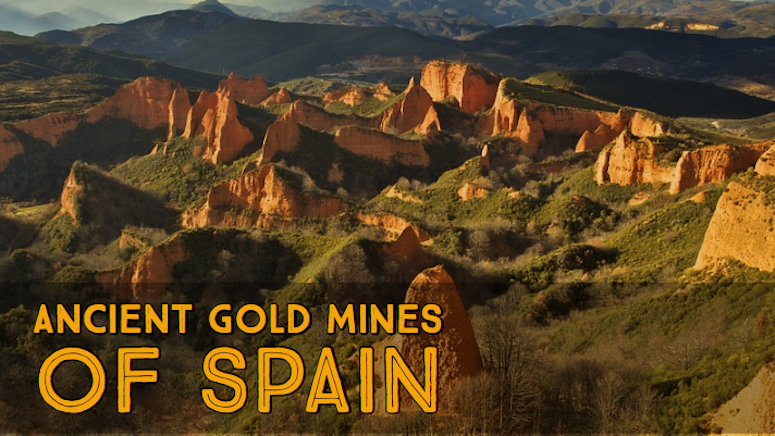
The mining activities in Spain are reported to have began way back in the 25 BC, and was primarily concentrated in the area of Las Medulas. But with time, more prospectors embarked on more explorations for the precious metals, and eventually gold was also discovered in the region of Almeria, which is located in the north-western corner of Spain.
Other records state that the actual commencement of gold mining in Spain was after the period of the Roman invasion. This was the time the Romans got the determination to accumulate more wealth for themselves, as they also pushed forward the agenda of free labor when they took full control of the region.
Over the centuries we have learned that gold occurs in many more areas throughout the country. There is now growing interest from major mining companies. Recreational gold prospectors are also enjoying the fun of going out and finding gold in the Spanish countryside.
Mining Methods in Early Spain
In those early days of gold mining, the prospectors throughout the country employed the use of standard alluvial panning methods to extract the fine gold deposits within the creeks and rivers.
Prospectors also had knowledge on how best water could be used to extract gold. For this reason, the method of hydraulic processing was used in a number of gold-bearing areas including Las Medulas, located in the region of El Bierzo. This was easily the most important gold mine in Spain’s history, and the major source of gold for the Roman Empire.
These were some of the earliest hydraulic mines, and considering how old they are they were amazingly advanced systems of canals and aqueducts to supply water to the mining operations.
High pressured water was used to wash overburden and release gold to be captured in sluices. This method is not used today for environmental reasons, but it was a high efficient way to release gold from its host.
Much of the gold in Spain occur as placer deposits. These are the types of deposits that most prospectors seek out today because they are easily recoverable using a basic tools like shovels and gold pans. At the same time, some bedrock is reported to have Kimberlite ore that contains gold. With the right tools or equipment, extraction of such gold from the hard rock is also attainable.
Read: Crush and Melt! How to Remove Gold from Rich Ores
Mining Companies Have an Interest in Spain
The gold mining industry is on the increase throughout Spain due to the favorable price of the commodity on the market. Interest has waned in recent years following the price peaks a few years ago, but the gold is still present and companies are still interested if ore can be extracted profitably.
As a result, there is a lot of gold prospecting being undertaken in the country. Locations which include Peralonso and Cabeza de Caballo of Salamaca Province, situated in the western part of Spain, as well as the Province of Zamora have been known to be among the most active places where gold mining is concerned.
Due to the high potential of gold availability in the country, a number of companies such as Ormende Salamanca have been conducting a lot of explorations for gold deposits.
Apart from the western region, the other places known to host huge potentials for gold deposits in Spain are located in the north-western region. It is reported that an area of about 300 square kilometers is believed to be a gold-bearing area. And this has attracted the exploration activities being executed in the area by Astur Gold Corp whose exploration activities date back to 2010.
Medgold is one of the Companies managing the Pinzas Gold Project in Galicia. Other companies such as an Irish exploration Company have expressed interest in undertaking a gold mining project at El Valle, which is about 100 kilometers from Salave of Asturias.
Even Smaller Miners Can Find Gold
The availability of gold deposits in Spain is so much that even the small-scale gold prospectors have not been left out. Access to private owned lands where the mining activities are underway may be a challenge, but when permission can be granted there are many gold-bearing areas that are worth exploring.
Prospecting efforts will be best taken in areas with known gold occurrences. These same regions that are attracting large mining companies will often have small placer gold deposits within the surrounding waters that can easily be found with a shovel and a gold pan. Simply dig down into the gravels and expose the hard bedrock of the stream. Scoop gravel found directly on bedrock into your gold pan and sift the material to search for small flakes of gold.
Gold will not be large, but rather it will be tiny specks and flakes. Use a proper panning technique to separate the heavy gold particles from other lighter materials. The way that the gold particles act in your pan will help you distinguish it from various types of “fool’s gold” and other shiny materials.
Next: Minerals Associated with Natural Gold Deposits
